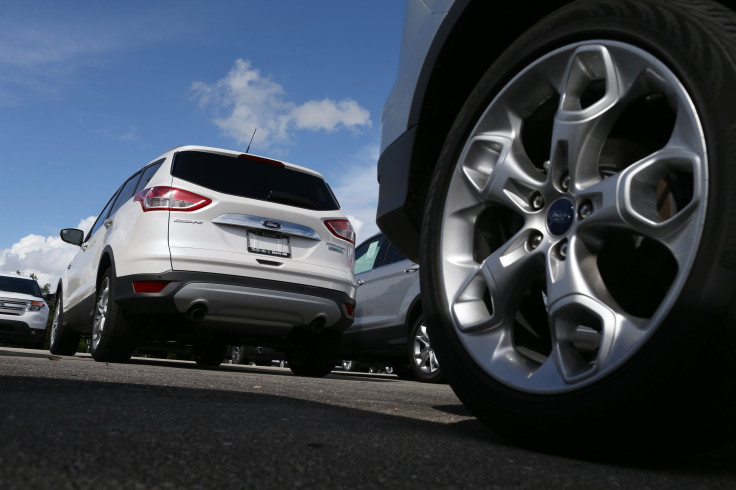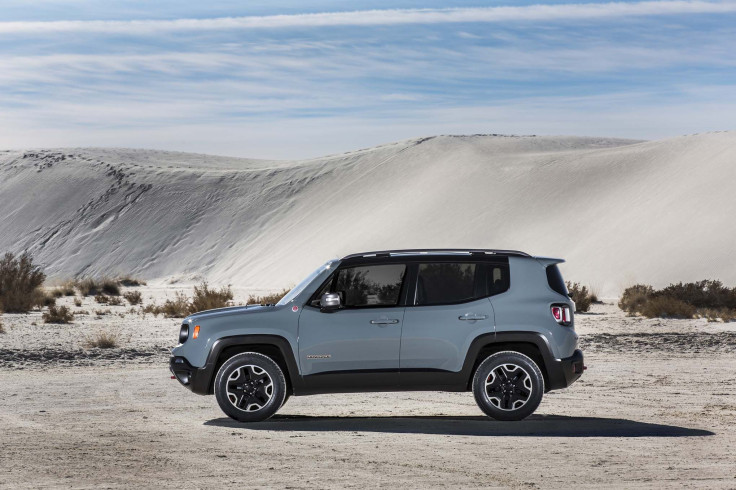May 2015 Auto Sales Forecast: US On Track For Highest Tallies Since August On Demand For SUVs, Trucks; Jeep Cherokee, Wrangler Sales Soar

Americans are buying new vehicles at the strongest pace since last summer, and more of them are walking past sedans and driving pricier SUVs and trucks off dealers’ lots. Cheap gasoline and low borrowing costs have helped spur sales, which are well on their way to a sixth consecutive year of growth in 2015.
Automotive analysts are forecasting May's sales to be around 1.6 million vehicles, for a seasonally adjusted annualized rate of 17.3 million, the highest level since August. But the numbers also show the breakneck pace of growth is slowing.
Automakers will report May U.S. new car sales on Tuesday. This month’s sales likely dropped about 1 percent compared to May 2014. The decline is partly explained by the fact that there is one less selling day in May this year compared to last year. The broader trend, however, shows growth is slowing and could soon level off as borrowing costs increase.
“I think we’ll see some pressure on this cycle,” said Steven Szakaly, chief economist for the National Automobile Dealers Association. “This year will be one of the best, but next year we expect flat sales, or maybe 1 to 2 percent growth.”
That 1 percent to 2 percent growth would be a big drop from the double digit, annual new-auto sales growth from 2010 to 2012. Last year, U.S. new-auto sales increased nearly 6 percent, but this year that growth rate could decelerate to 2.4 percent, to 16.9 million units. Some estimates expect sales this year to hit or top 17 million, but that’s still roughly half the growth rate of last year.
Sales will also soon be affected should the Federal Reserve decide later this year to raise interest rates for the first time in nine years. The rate hike would make financing cars more expensive, dissuading buyers.
Another issue, says Szakaly, is wage growth.
“We’ve seen car prices accelerate well beyond wage growth,” he said. “You can’t have vehicle prices rising by close to 3 percent and wages rising by 2 percent. That’s not sustainable.”
But for the time being, automakers and dealers are still enjoying the bounty of a slow-but-gradual recovery from the Great Recession. The long Memorial Day weekend saw a 7 percent sales increase compared to the same holiday sales event last year, according data from to TrueCar.com.
Incentive spending (deal sweeteners like factory rebates) is also holding steady at an industry wide average of $2,661 per sale. That level has remained steady for three consecutive Mays, which means that on average automakers haven't needed to increase incentives to grow sales.
The big winners this month will be FCA (Fiat Chrysler Automobile), which has seen consumers flock to its newer Jeep Cherokee. Jeep Wrangler sales are also up more than 20 percent this year, and the Jeep Renegade -- a sub-$20,000 small SUV -- just hit the market recently.

FCA sales could grow nearly 3 percent, according to a monthly forecast from Kelley Blue Book. The maker of Fiats, Chryslers and Jeeps is expected to be one of the only major automakers to grow sales this month. (Major automakers exclude BMW, Mercedes-Benz and other premium car brands.) Jeep sales could hit a record high as consumers flock to SUVs and crossovers.
Meanwhile, automakers that are heavily reliant on sedan sales are likely to see significant sales declines. Honda sales could fall 5 percent, followed by Hyundai-Kia, Ford and Toyota.
© Copyright IBTimes 2024. All rights reserved.





















